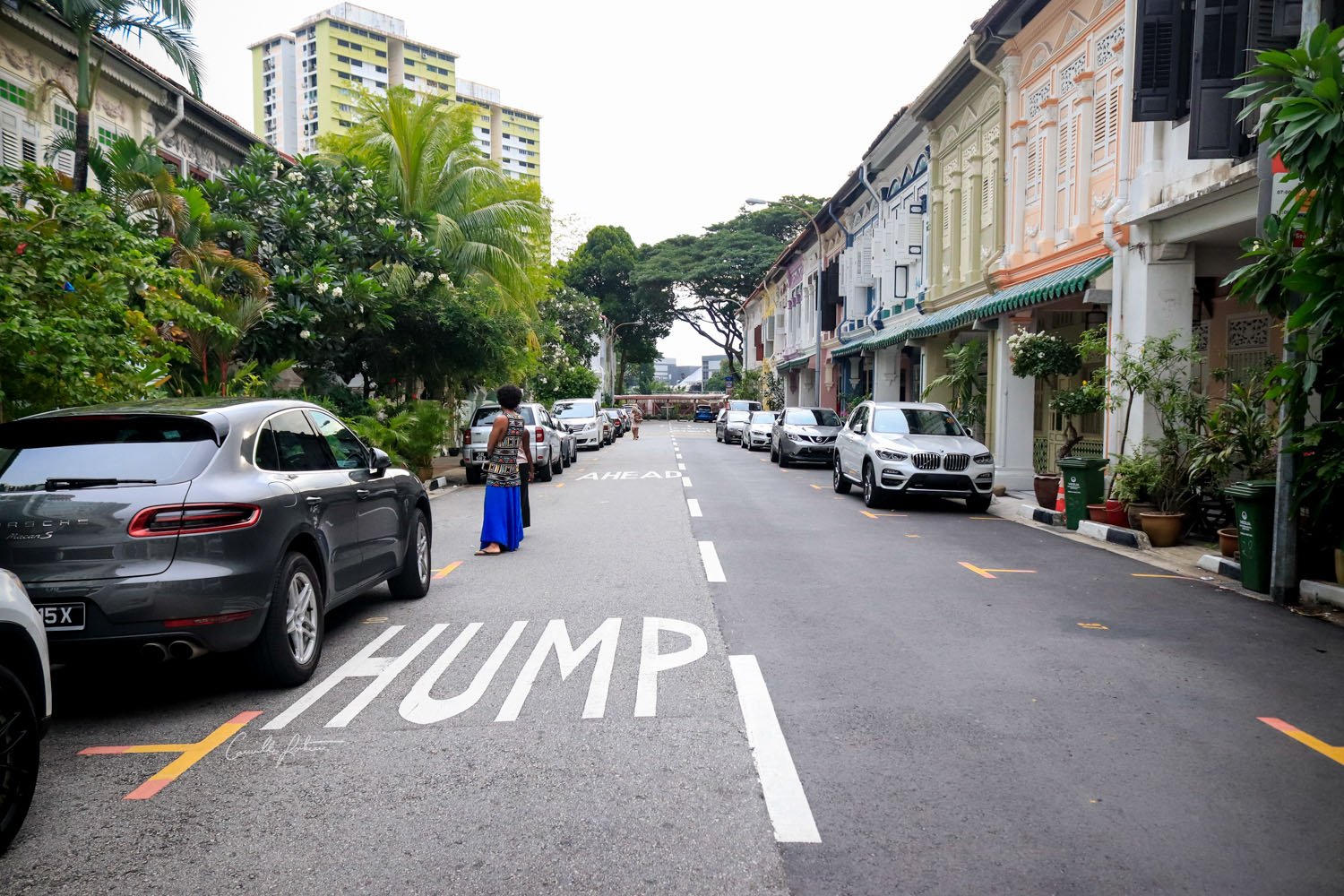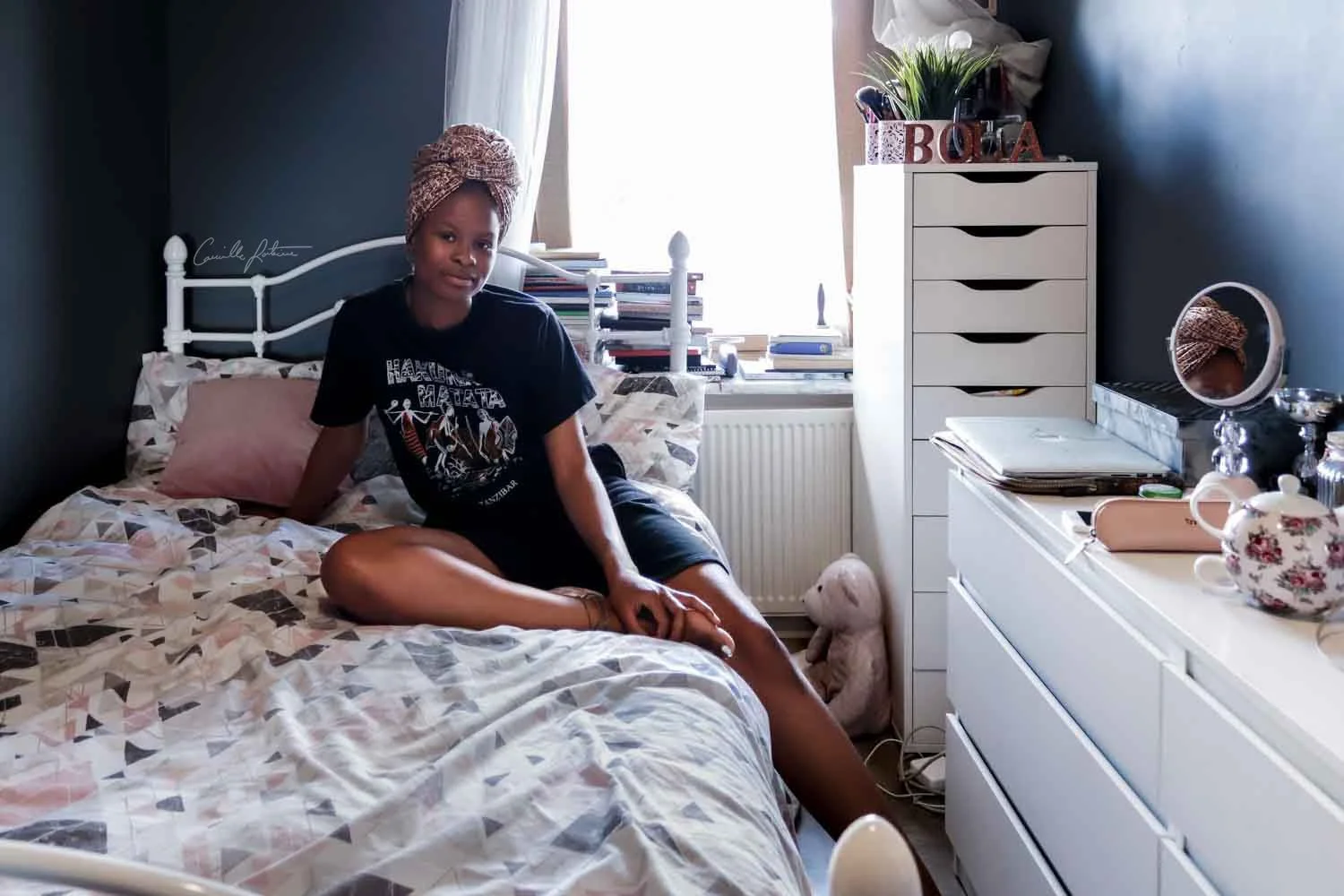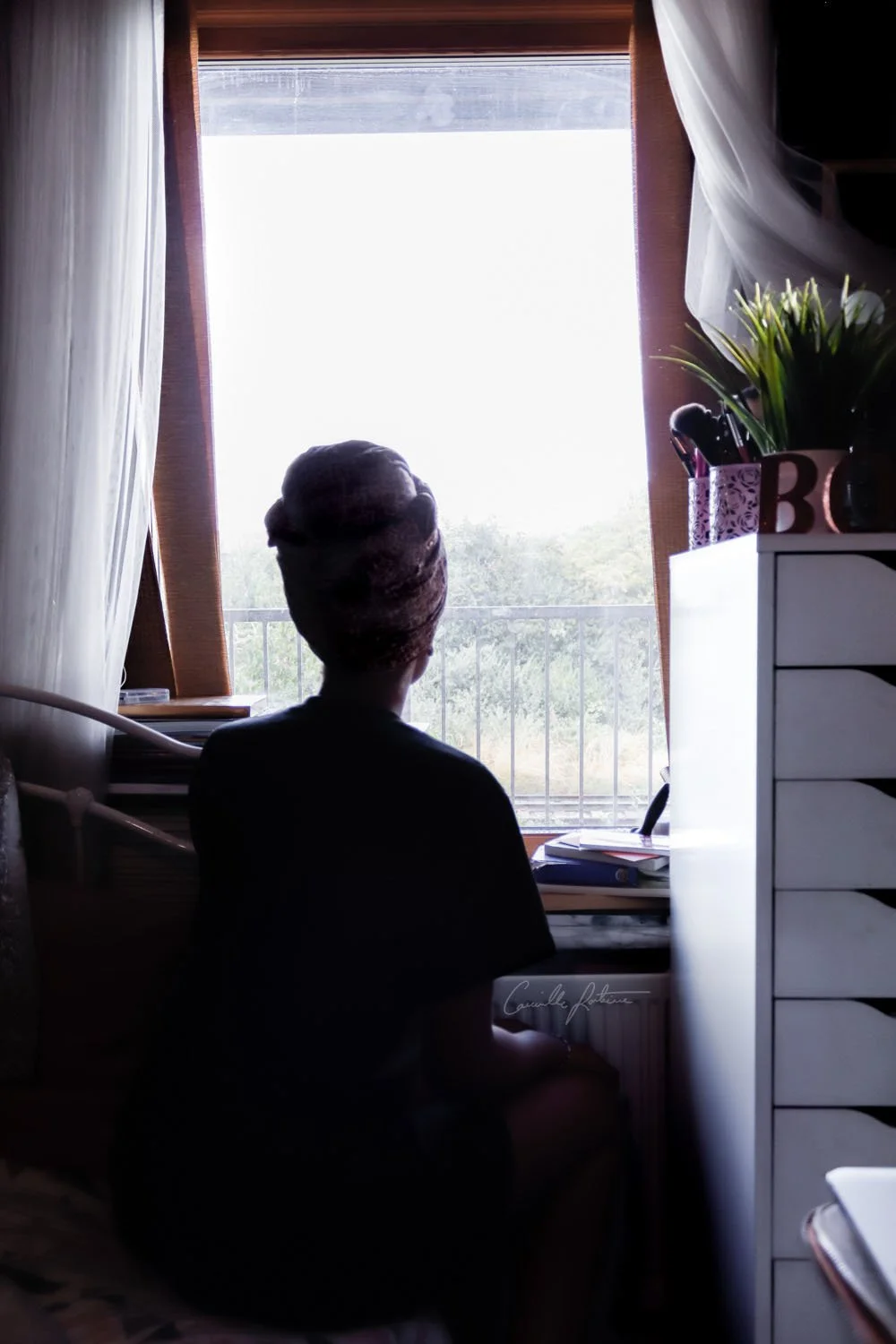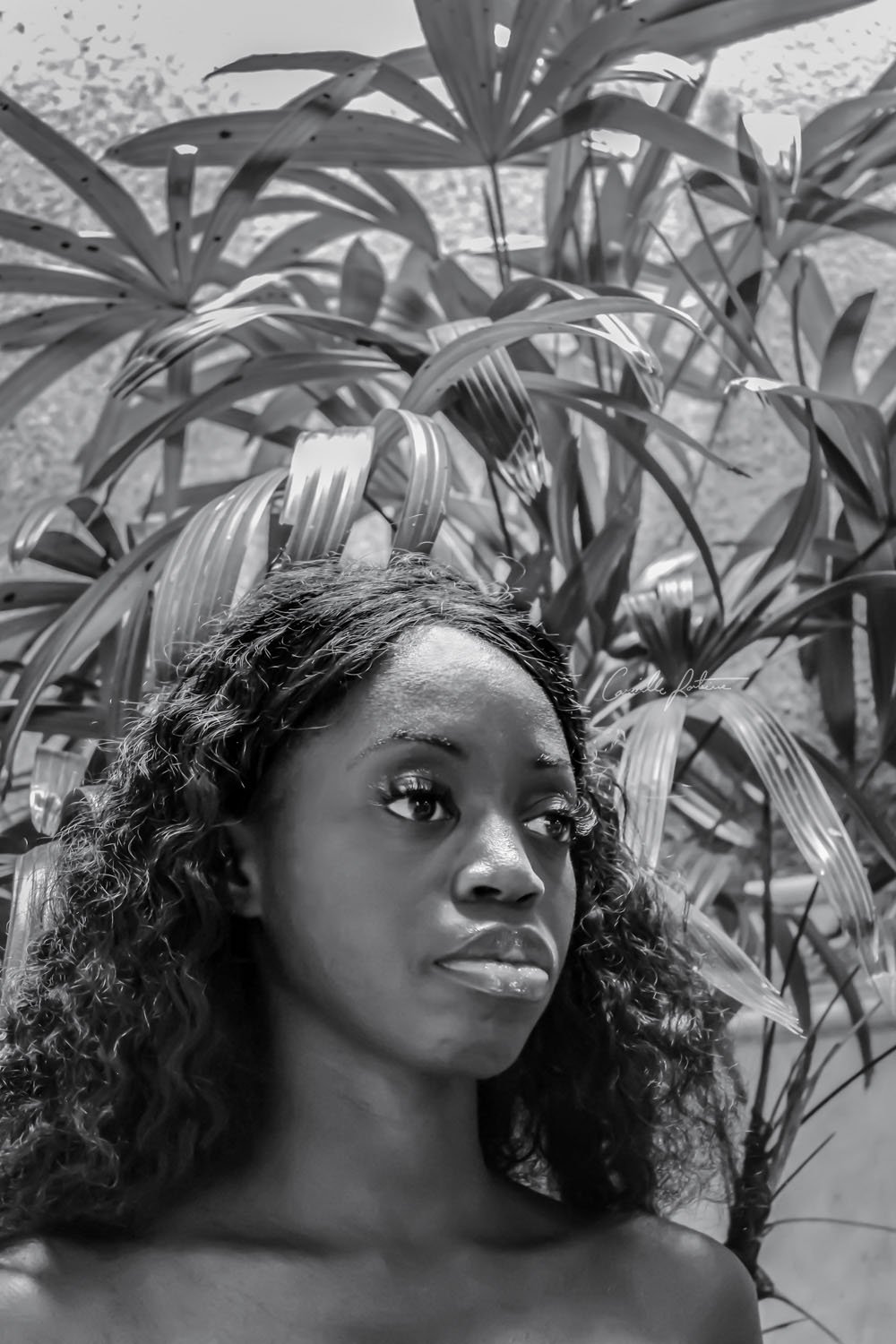The HOME Series - Stills
The photographic gallery and where the documentary began.
‘HOME’ is an ongoing project documenting concepts of identity from within the global African diaspora, by capturing participants in spaces that they currently inhabit. The project explores shifting notions on identity and social belonging through location. It also investigates freedom of movement, ownership, migration and citizenship in relation to blackness in society.
This project is currently live. Get in contact to participate.
Photographs captured in the UK aim to knit together diverse narratives of Black identity in Britain, from within the diaspora. Photographs captured internationally look at the ideas surrounding migration and the representation of Black bodies in travel and expat communities.
Watch the preview video to this series: The HOME Series - Film

Tiera:
Singapore, SG
Tiera from Atlanta, Georgia, USA was living and working in Singapore, as one of many African American expats who were (and still are) exploring home outside of the US. She had requested to shoot on the front porch of her friend Jon’s house, as the architecture of the residence captured her interpretation of the city state. Her friend Jon also features in her images, as they met through a community of African American expats living in Singapore. Jon’s solo photographs can be found further along on the page.
In some of the images, Tiera sits at a table with a plant and an object that holds meaning to her – her globe. As the globe was a gift from a loved one, it keeps Tiera close to her US home despite being physically apart. ‘Home’ was a difficult concept for Tiera to express or experience whilst she was abroad, as access to familiar sensations (e.g. buying comfort foods such as grits) weren’t easily available. Therefore, the presence of community symbolically through her globe, created a small sense of familiarity. She adds a sticker to each new location on the map, to mark the memories made on her expat journey, but also to keep her loved ones closer.
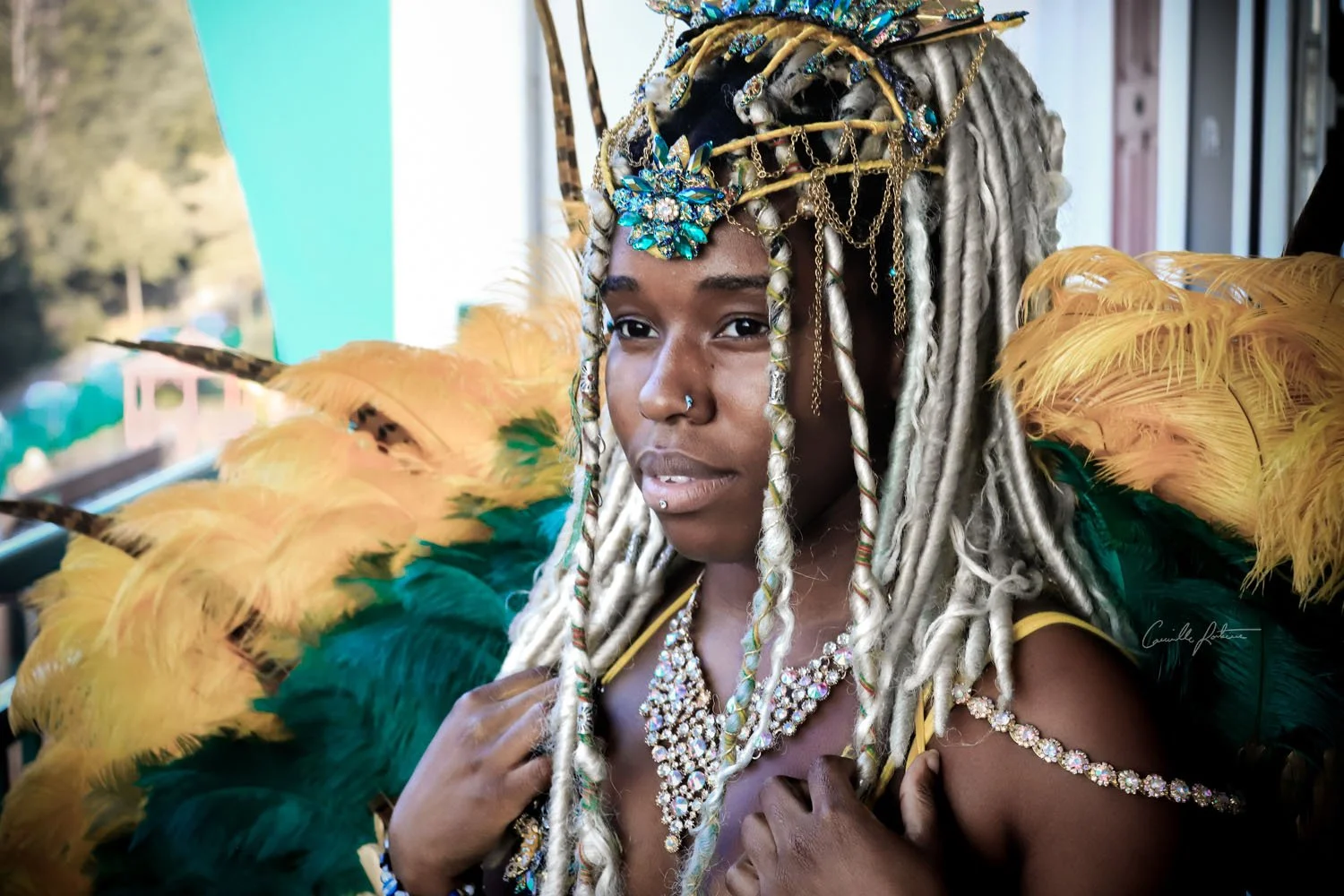
Sharifah:
London, England
Sharifah is a second-generation Londoner, of Jamaican and Vincentian heritage. Carnival culture from across the Caribbean communities and shared traditions of the African diaspora are a large part of Sharifah's sense of being. To reflect this, she chose to feature a masquerade costume that she designed, and made, for the annual Notting Hill Carnival. ‘Home’ for Sharifah is being able to embody her cultural and ethnic identity, and in this context is something she wears and performs. However, she can only fully and visibly express this part of herself 'freely' once a year - when the sounds, smells and tastes of the Caribbean are considered to be an appropriate expression of a seasonal, summer event in the UK. For those that the culture belongs to, the rich spirit and history of Caribbean carnivals extend beyond the media portrayal of a ‘raunchy, street party’, as it is rooted in the liberation of oppressive regimes, something which is still at the heart of the celebration.
As Sharifah walked in the public spaces of the block of flats (the balconies and the entrance to the stairwell), it struck me how juxtaposed the mood between the space she inhabited was to the culture she carries. The physicality of her ‘home’ i.e. within a block of flats in London, is not a clear indication of how she perceives the concept of home; the space is temporary and a clear contrast to the ‘home’ she adorns herself with.
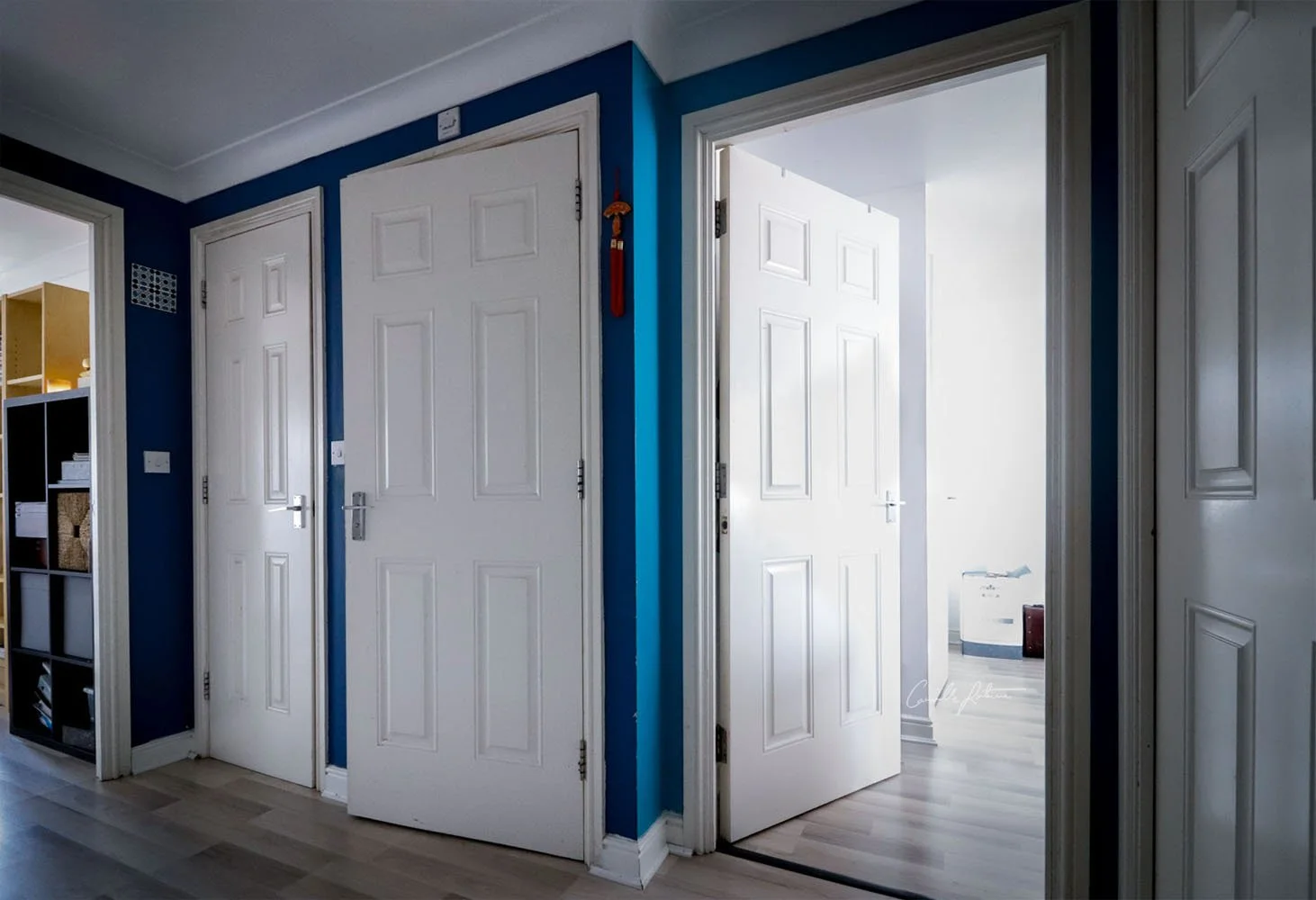
Armando:
London, England
Armando’s relationship with the concept of ‘home’ is quite layered, and is expressed through the interiors of his home. He was born in Portugal to Angolan parents, but left to pursue a career in fashion and a new life in London as a teenager. The artworks hung around the house are African and Portuguese pieces: the blue paint on the walls symbolise the Portuguese cityscape Armando observed growing up. These cultural elements serve as a sense of familiarity and a reminder of his roots; however, he mentions London being the first city that truly felt like home when he arrived as a teen in the 90’s.
As Armando stands in the doorway of his living room, we chat about whether London still feels like home for him in the midst of the Brexit referendum. At this time, Brexit negotiations were ongoing, with anti-European sentiment being central to the campaign. As a result, London is not same space it was 20 years ago and location-wise, the concept of home has changed for Armando. He reflects on ‘home’ now being a safe space within self, created internally and always with us.

Clara:
London, England
Clara is a proud East Londoner and immediately wanted to represent Hackney in her chapter. Born in London to Barbadian and Jamaican parents, she feels home is located in either London or Birmingham, as it’s where her family are based.
When picking locations, Clara explained that the hustle and bustle of Hackney is precisely why she loves it; Dalston and Ridley Road markets are spaces where Black diasporic communities are able to exist within their cultural heartbeat. The tempo, verbal and non-verbal communication that occurs during the exchanges are forms of language of their own that can’t be experienced in brick and mortar establishments in the UK. The visuals of the local hairdresser or the free-forming order of the various types of shops that neighbour one another, is signature to these spaces that have managed to hold off the mass gentrification of London’s global community hubs.

Jon:
Singapore, SG
Jon, “a lil country gal” from North Carolina has lived across cities in the United States, creating BIPOC networks in New York and San Fransisco that are worlds away from their small hometown of Garner, NC. Jon relocated to Singapore after reminiscing on their first expat experiences- years earlier- as an undergraduate (BA) student across SE Asia. And decided it was time to return to Singapore after being away for many years.
Jon’s sense of home was maintained through their background in dance; by hosting performance events in Singapore, Jon nurtured a community of like-minded creatives. Jon’s photos were captured within their home and the surrounding areas of in the residential Katong neighbourhood, where Singapore’s historical Peranakan culture and architecture can be found.

Bola:
London, England
Bola, a Nigerian-British creative is sat on her bed, in her room. Bola's room is her chosen space to be captured in, as it is her sanctuary. When discussing 'home', Bola wanted to be shot in a space where she could be her authentic self, away from others. She reflects on 'home' meaning where she is most comfortable, in a space when and where she can ‘unmask’.

Jean:
Bali, Indonesia
Originally comes from the sunny streets of California, Jean - a former lawyer with girl-next-door charm - sits in the garden of the home she was renting in Bali, Indonesia. She was the first of the participants I captured in this project and was keen to relay her story of going from a lawyer to full-time a traveller. Jean had achieved many goals in her law career and despite the impressive life she had managed to acquire through her hard work, she found fruits of the hustle culture tremendously empty.
Jean described one day looking at her apartment and realising that she wanted to be able to enjoy the hours in the day and not succumb to the monotony of the corporate routine. Despite the comforts afforded to her, the space didn't feel like 'home'. Jean found herself in need of stepping away from the career-focused lifestyle to more organic surroundings; Bali being the location she arrived at on a whim. But once she arrived, she found it to be the exactly what she needed.

This project was featured as part of Adam & Everywhere DDB’s global @She.Takes.Over campaign for International Womxn’s Day 2022. The campaign aims to highlight womxn in the creative industries across the month of March, with 2022’s theme asking how we #BreaktheBias in our creative fields.
Campaign partners also include: Campaign Magazine UK, Equal Lens, Free The Work, Clear Channel UK and the Alliance for Women Film Composers.

































































